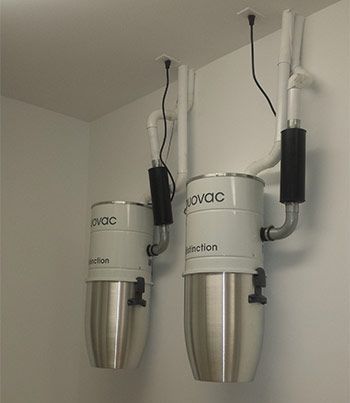Why Prefer A Central Vacuum System?
Table of Contents
Why Prefer A Central Vacuum System?
 What is a central vacuum system? Central vacuums consist of a fixed motor and dust collection holder connected to tubes inside the walls.
What is a central vacuum system? Central vacuums consist of a fixed motor and dust collection holder connected to tubes inside the walls.
These tubings lead to vacuum ports through the house. A hose and cleaning head can be inserted into these ports for vacuuming and then put away. Central vacuums do some cleaning activities better than portable units, but portables have advantages as well.
However, the benefits of a central vacuum system outweigh those of a portable vacuum. Let's look at the differences while answering the question: are central vacuum systems good?
Motor Size and Noise
The motor device of a central vacuum cleaner can be fitted in the corner of the house detached from the main living spaces, making it quieter than portable vacuum cleaners. Because portability is not an issue, central vacuum motors are massive and three to five times more robust than those on a portable vacuum cleaner. It lets the central vacuum to get more dirt and dust but also makes it more likely to pick up socks and toys and other tiny household items unintentionally.
Cleanliness and Cost
 Central vacuums systems are regarded as hypoallergenic and enhances indoor air quality, which can be specifically advantageous to those with allergies or asthma.
Central vacuums systems are regarded as hypoallergenic and enhances indoor air quality, which can be specifically advantageous to those with allergies or asthma.
However, this spotlessness comes at a cost with central vacuum installation starting at a higher price than portable vacuum cleaners, and increasing depending on the size of the home and whether the vacuum is fitted during construction or after. On the other hand, a hand-held vacuum cleaner won't break the bank, but it could be stiff on your back. A portable vacuum cleaner must be taken from room to room and can be somewhat bulky and difficult to steer, especially on staircases.




Log In
Create New Account